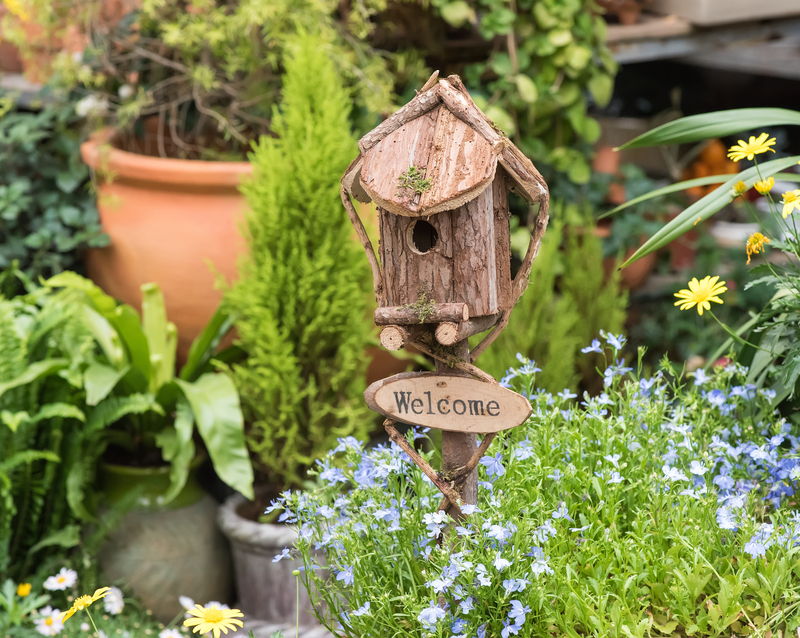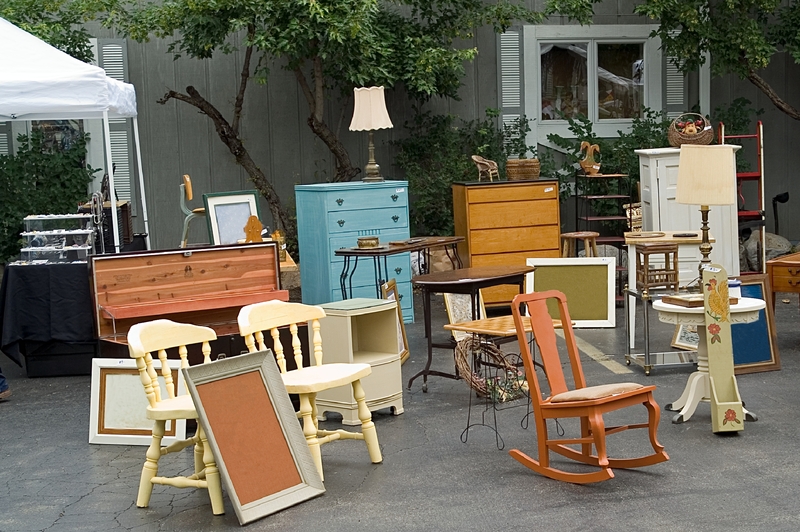Conscious Choices for Less Household Waste: A Guide to Sustainable Living
Reducing household waste is no longer a niche lifestyle trend--it's a critical practice for anyone committed to lessening their environmental footprint. Making conscious choices at home can shrink your garbage pile, save money, and foster a healthier world for future generations. In this comprehensive article, you'll discover practical tips, strategies, and the inspiration you need to create a less wasteful, more sustainable home.
Why Focus on Household Waste Reduction?
The average household produces tons of waste annually, much of which ends up in overflowing landfills, oceans, and the atmosphere. Plastic packaging, food scraps, single-use products, and fast fashion all contribute to the mounting waste crisis.
- Less household waste means fewer resources consumed for production and disposal.
- Reducing waste at home lowers your carbon footprint.
- It also saves money and can often simplify your lifestyle.
- Conscious waste reduction encourages creativity, resourcefulness, and awareness of our impact.
Let's explore actionable ways to make conscious choices for less waste at home.

The Three "R"s: Rethink, Reduce, Reuse
Chances are, you've heard about the "3Rs": Reduce, Reuse, Recycle. But with growing awareness, many sustainability advocates now start with a fourth: Rethink your consumption.
- Rethink: Consider whether you truly need an item before acquiring it.
- Reduce: Cut back on what you consume and bring into your home.
- Reuse: Find multiple lives for products rather than disposing of them.
- Recycle: Properly sort what you can't avoid, aiming for a minimal bin.
Starting with a mindset of rethinking consumption is key to making conscious choices that result in less household waste.
Buy with Intention
When shopping, ask yourself:
- Do I really need this?
- Is it built to last?
- Is there a less-wasteful or reusable alternative?
- Can I borrow or rent instead of buying?
By choosing quality over quantity and favoring sustainable brands and products, you avoid much future garbage.
Smart Shopping: Minimizing Waste Before It Starts
The journey to less household waste begins at the point of purchase.
Choose Products With Less Packaging
- Buy in bulk to minimize individual packaging.
- Select products with recyclable, compostable, or reusable packaging.
- Bring your own reusable produce bags and containers to stores.
Support Zero Waste Stores and Local Businesses
- Frequent zero waste shops that allow you to refill containers.
- Buy from local farmers markets, which tend to use less packaging.
Plan Your Meals
- Write a weekly meal plan to buy only what you need.
- Stick to your grocery list to reduce impulse buys and excess packaging.
- Buy fresh, unpackaged produce when possible.
Mindful meal planning is key for generating less kitchen and food waste.
Reducing Food Waste at Home
Globally, around one third of all food produced goes to waste. Households are the biggest contributors to this statistic. Not only does food in landfills produce methane, a potent greenhouse gas, but it wastes the water, energy, and resources used to grow and transport it. Here are some strategies:
Store Food Properly
- Keep fruits and veggies in appropriate fridge drawers or at room temperature.
- Freeze leftovers and surplus produce before it goes bad.
- Use airtight containers to prolong the life of grains, flours, and snacks.
Get Creative With Leftovers
- Transform last night's dinner into a new meal (e.g., soup, stir fry).
- Incorporate "scraps" like broccoli stems or carrot tops into stocks and pesto.
- Plan a weekly "clean out the fridge" meal to use what you have.
Compost What You Can't Eat
- Set up a compost bin for fruit and vegetable scraps, coffee grounds, egg shells, and more.
- If you don't have outdoor space, explore indoor composters or community drop-offs.
Composting significantly reduces the amount of household waste headed to the landfill.
Single-Use to Sustainable: Swapping Everyday Items
The prevalence of disposables can make it challenging to create a waste-free household. However, swapping these for reusable alternatives is easier than you think.
Switch Out These Common Household Items
- Plastic Wrap → Beeswax wraps or silicone lids
- Paper Towels → Cloth towels or old t-shirts
- Disposable Water Bottles → Stainless steel or glass bottles
- Plastic Grocery Bags → Reusable tote bags
- Coffee Pods → French press or refillable pods
- Napkins → Fabric napkins
- Disposable Razors → Safety razor or electric trimmer
Each swap may seem minor, but added together, they drastically reduce household waste generation over time.
Cleaning Green: Minimizing Waste in Home Care
Household cleaning packs a lot of hidden waste--for example, countless plastic spray bottles, sponges, and disposable wipes get thrown out every year. Here's how to clean consciously:
DIY Cleaning Products
- Make your own cleaners using vinegar, baking soda, and castile soap.
- Store in glass spray bottles that you refill, not replace.
- Add essential oils for fragrance, avoiding unnecessary chemicals or packaging.
Choose Sustainable Cleaning Tools
- Opt for scrubbers, brooms, and brushes made from natural materials.
- Use washable sponges and microfiber cloths rather than disposable wipes.
Conscious cleaning not only cuts waste--it's better for your health and indoor air quality, too!
The Art of Reusing and Repurposing
Giving items a second (or third) life is central to conscious waste reduction. Before discarding anything, ask how it could be reused or creatively repurposed.
Reusing in the Kitchen and Beyond
- Jars become food storage or vases.
- Old t-shirts become cleaning cloths or produce bags.
- Egg cartons start seedlings for your garden.
- Cardboard boxes serve as organizers or craft supplies.
Engage the whole family in upcycling projects--turning "junk" into useful or beautiful items can be fun and fulfilling.
Responsible Recycling
Recycling is important, but it should be your last resort after reusing and reducing. Many items placed in recycling bins are contaminated or non-recyclable, ending up in landfills anyway. To ensure your recycling efforts are effective:
Know What Your Local Program Accepts
- Check your city's recycling guidelines--every area is different.
- Rinse containers and remove food residue before recycling.
- Don't "wishcycle"--when in doubt, leave it out or find a dedicated collection point.
Special Recycling for Hard-to-Recycle Items
- Batteries, electronics, and lightbulbs should go to hazardous waste or specialty programs.
- Textiles can often be donated or recycled by certain firms.
Becoming a responsible recycler ensures the materials you do let go have the best chance at a new life.
Conscious Decisions in Every Room
Bathroom
- Switch to bar soap packaged in cardboard instead of liquid in plastic bottles.
- Use reusable razors and opt for toothpaste tablets or cardboard toothpaste tubes.
- Consider reusable menstrual products like cups or cloth pads.
Laundry Room
- Cut dryer sheets in favor of wool dryer balls.
- Make laundry detergent or buy in bulk/refillable form.
- Line dry clothes more often to reduce energy use.
Home Office
- Go paperless wherever possible -- scan, save, and share documents digitally.
- Use refillable pens and recycled paper if printing is necessary.
- Donate or recycle old electronics responsibly.

How to Get Started: Making the Transition to a Lower Waste Home
Transitioning to a low waste household isn't about perfection--it's about progress and persistence. Here are steps for lasting change:
1. Conduct a Waste Audit
Spend a week examining your trash and recycling. Identify what comprises most of your waste and set reduction goals. Maybe it's food scraps, or single-use plastics--knowing your baseline is essential.
2. Set Achievable Goals
Start with a manageable focus area (like kitchen or cleaning supplies) and expand to new habits over time. Small, sustainable changes add up.
3. Involve the Household
- Educate family members or roommates about conscious choices for less waste.
- Assign roles, celebrate successes, and make it a fun challenge.
4. Share and Inspire
- Join local or online sustainability groups.
- Swap products with friends or neighbors, or host a repair cafe.
The Ripple Effect: Why Conscious Choices Matter
Every piece of waste you avoid, reuse, or properly dispose of matters. It's easy to feel like individual actions are insignificant, yet when multiplied by millions of households, the impact is enormous. Plus, visible changes in your home can inspire friends, neighbors, and your wider community.
In summary, making conscious choices for less household waste is an ongoing process. No one is perfect, but every effort helps protect our planet and paves the way for others to follow. Begin with one change today, and watch as your household becomes a model of sustainability and stewardship.
Ready to start your journey to less household waste?
- Conduct a waste audit.
- Choose two disposable items to swap for reusables this week.
- Start composting or find a local program.
- Support local businesses and zero waste initiatives.
- Reimagine what home means when it's in harmony with the earth.
With every conscious choice, you shape a cleaner, greener, and more hopeful future--starting right at home.